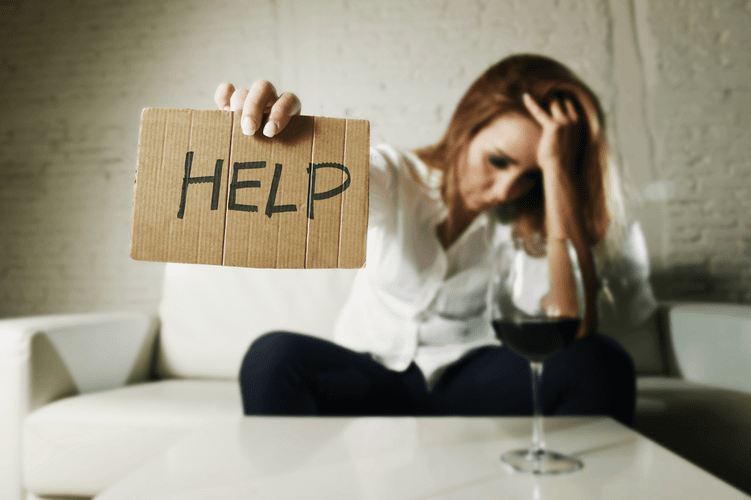A Guide to Low-Dose Naltrexone Benefits & Is it Safe?
But if it’s almost time for your next dose, skip the missed dose and take your next dose at its usual time. If you’re not sure whether you should take a missed dose, talk with your doctor or pharmacist. A healthcare provider may prescribe naloxone together with naltrexone for those being treated for opioid use disorder. In many cases, side effects such as dizziness and digestive problems go away within a few hours to days of starting naltrexone treatment. Even though these effects are usually relatively mild, medical attention could be required if the side effects linger or worsen in https://www.welkininterior.com.au/i-have-ptsd-anxiety-depression-and-started/ severity.
Consult With Confidant’s Online Doctors About Naloxone Treatment
The side effects of low dose naltrexone are uncommon and reported by less than 8% of people. Naltrexone is sometimes prescribed off-label at low dosages, also referred to as low dose naltrexone, to treat a number of different conditions. With off-label use, a drug is prescribed for a use not approved by the FDA. At lower dosages, naltrexone works differently in the body and has been reported to cause fewer side effects.
- Inform your doctor of all medications you are currently taking, who can advise you on any possible drug interactions.
- While pregnant, naltrexone should only be used when it’s 100% necessary.
- However, if your symptoms are serious and you think you’re having a medical emergency, immediately call 911 or your local emergency number.
- If your thyroid isn’t producing enough hormones, it requires the right thyroid hormone replacement medication as well as diet and lifestyle modifications.
If you don’t know whether you’ve been taking an opioid-containing medication, you can ask your doctor to check. Your doctor may also give you a naloxone challenge test or a urine test for opioids before prescribing naltrexone to confirm that you don’t have opioids in your system. If you have questions about naltrexone and side effects, talk with your doctor. Here are some frequently asked questions about the drug’s side effects and their answers.
How long do naltrexone side effects last?
For example, with opioid pain relievers, combining LDN with drugs like Ultram (tramadol) and OxyContin (oxycodone) may cause withdrawal symptoms. Naltrexone is an opioid antagonist that binds to opioid receptors in the central nervous system (CNS) and blocks their stimulation by natural (endogenous) or ingested opiates, and alcohol. Opioid receptors are protein molecules on nerve cell (neuron) membranes in the central and peripheral nervous systems. Opioid receptors mediate the body’s response to most hormones and some of their functions include modulating pain, stress response, respiration, digestion, mood, and emotion. Naltrexone is more than just a medication; it’s a tool for transformation.
Naltrexone and Its Clinical Significance
- It is known to reduce the frequency of drinking, the number of drinks consumed, and binge drinking episodes.
- If you have current symptoms of opioid withdrawal, you should not take naltrexone.
This dual action helps in managing pain and improving the quality of life for patients with chronic conditions. One of the most compelling aspects of low dose naltrexone (LDN) is its anti-inflammatory properties, which contribute significantly to its therapeutic benefits in treating chronic pain conditions. drug addiction Some people may experience gastrointestinal symptoms such as nausea, diarrhea, or abdominal pain, especially during the initial stages of LDN treatment. These side effects are generally mild and tend to subside as the body adapts to the medication. One of the most commonly reported side effects by individuals starting LDN therapy is sleep disturbances, including vivid dreams and insomnia. Difficulty sleeping initially was reported by approximately 8% of people receiving low dose naltrexone.
Naltrexone Withdrawal Symptoms
With each dose of naltrexone, the goal is for the cravings and urges to lessen, leading to less alcohol consumed each time. This leads to eventually reducing the amount or even eliminating drinking, if that is what the person desires. This is known as the elimination method, where a behavior is slowly reduced due to a reduction in cravings and urges. AUD is one naltrexone side effects of the most severe health conditions in the United States, with approximately 80,000 annual deaths attributed to alcohol use. Studies have shown that in 2023, of the estimated 28.9 million people 12 years of age and older in the U.S. with AUD, 2% received alcohol treatment medication, including naltrexone, in the past year.
What should I do if I miss a dose of naltrexone?
I don’t practice medicine anymore and instead specialize in helping people like YOU who have thyroid problems, hormone imbalances, and weight loss resistance. I also happen to formulate the best supplements on the market (well, at least in my opinion!) and I’m proud to say that over 80,000+ people have used them over the last 7 years. You can read more about my own personal health journey and why I am so passionate about what I do.

No information is available on the relationship of age to the effects of naltrexone in geriatric patients. Appropriate studies have not been performed on the relationship of age to the effects of naltrexone in the pediatric population. Verify your insurance today – treatment could be more affordable than you think. However, low-dose (the dosing given for most conditions treated) naltrexone is typically well-tolerated. In animal studies, low-dose naltrexone demonstrates a potential anti-tumor effect.
- The studies also found that treatment with naltrexone and bupropion caused few side effects and was well-tolerated during long-term use.
- The person does not experience the desired alcohol pleasurable state.
- By being informed about these potential side effects, patients can better prepare for their experiences with LDN and discuss any concerns with their healthcare provider.
The critical difference between low-dose and high-dose naltrexone as it relates to treating pain is the variance in the drug’s dose-dependent mechanism. Higher concentrations of naltrexone help with drug and alcohol addiction. Like naloxone, nalmefene is FDA-approved to treat opioid overdose. Most notably, Narcan is FDA-approved to treat opioid overdose and reverse opioid-related respiratory depression.

You will be less likely to have nausea with your next injections. It is recommended that you carry an identification card stating that you are receiving naltrexone injection. You may also need to carry a letter to let others know you are receiving this medicine in case you have a medical emergency. Naltrexone injection will not prevent you from becoming impaired when you drink alcohol.
Only Curatolo and Trinh reported on the perioperative use of extended-release naltrexone. Although certain medicines should not be used together at all, in other cases two different medicines may be used together even if an interaction might occur. In these cases, your doctor may want to change the dose, or other precautions may be necessary. When you are receiving this medicine, it is especially important that your healthcare professional know if you are taking any of the medicines listed below.
This medicine is to be given only by or under the direct supervision of your healthcare provider. While Naltrexone shows promise in these areas, it’s crucial to remember that eating disorders and obesity are complex conditions requiring comprehensive treatment approaches. Naltrexone, when used, should be part of a multifaceted plan including psychological support, nutritional guidance, and lifestyle modifications. Insurance won’t cover LDN since it is an off-label use of the drug naltrexone. However, LDN is quite inexpensive even without insurance—it typically costs between $20–$30 per month 26. Your provider will need to call in an LDN prescription to your local compounding pharmacy, where they can tailor the medication to your specified dose.
